House of the Blackheads
House of the Blackheads
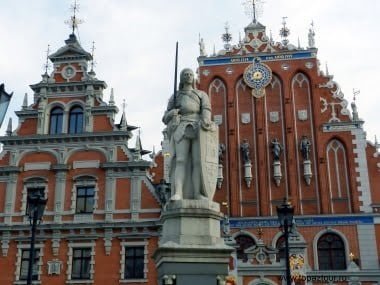 The House of the Blackheads is a famous architectural monument of the 14th century, located in the very center of Riga. Repeatedly reconstructed building was mostly destroyed during the Great Patriotic War. It was possible to restore the building today.
The House of the Blackheads is a famous architectural monument of the 14th century, located in the very center of Riga. Repeatedly reconstructed building was mostly destroyed during the Great Patriotic War. It was possible to restore the building today.
In historical documents, the building was first mentioned in 1334 as the new house of the Great Guild, and was built during the Order Occupation in the period from 1330 to 1353. At the end of the fifteenth century, the building was leased by the Blackheads and was called in those days only “The Court of King Arthur”, the current name of the house was supposedly received in the late 60s and 16th centuries.
Blackheads are a fraternity of young and unmarried foreign merchants. The brotherhood has existed since the end of the thirteenth century and is under the auspices of St. St. George, but later the patron saint of the brotherhood becomes St. Mauritius, whose symbol in the form of a black head in the coat of arms has become the hallmark of the fraternity.
The founders of the richest and most influential company were representatives of not only Riga, but also foreign companies engaged in direct delivery of goods to Riga. They also created the company of the Blackheads as a counterweight to the Big Guild of sedentary merchants in the city engaged in the repurchase of goods. But, despite the separation, the company was still under the supervision of the Big Guild until the end of the seventeenth century.
According to historical data, since 1477, Blackheads have been renting a house built for public needs by a guild of artisans. Decorating and rebuilding the building, the Blackheads over time become the sole owners of the New House. In the first half of the day the building works as a stock exchange, and in the second half of the day it is devoted to relaxation – it hosts various evenings, balls, and concerts, especially since the hall has wonderful acoustics.
At different times in this house there were clearly and secretly Russian tsars and queens. Portraits of the monarchs of Sweden and Russia served as a decoration of the hall, among them there is a portrait personally presented by Catherine the Second. So in the book of guests of honor, among the many entries there is a signature of Bismarck himself.
Along with the Great Guild, the organization led the public life of the city, took an active part in defense, and by the end of 1895 became a club of German merchants, ceasing its activities as a corporation. And since 1939, after the repatriation of the Germans, the club has been closed.
The initial appearance of the house, unfortunately, is unknown. The building covers an area of 425 sq.m., the main part of the house of the Blackheads is occupied by the central hall. Under the hall was a small floor divided into several rooms and a basement under it. The attic of the house served as a storage room. Despite the repeated changes and changes of the whole house – it was the hall that remained untouched, as the core of the building, which is of historical value.
Today’s view of the facade was made in the early 17th century in the style of European mannerism. According to the assumptions of Professor Wipper, the authors of the architecture of the building should be sought among the masters of Bremen, Danzig and Denmark. Nowadays, scientists suggest that this is Bodeker or Jansen. The facade is decorated with sculptures, decoration is made using art forging, another decoration is a watch. The House of Blackheads has a unique astronomical clock with a “perpetual calendar” mechanism. The three dials of the watch, in addition to time, show the date, month and year, as well as the time of sunrise and sunset and moon phase. In the museums of the history of Riga and navigation, as well as in the Architectural Museum, various fragments of the building’s decoration and parts of the interior of the Blackheads house are stored.
In 1684, a porch was completed, through which you can directly go to the second floor from the square. Another extension on two floors was built in 1794, and in 1816 another one, but from the side of the Daugava River. In the same years, the open porch replaced the covered entrance. The most recent and, perhaps, a significant change in the facade was made by the statues of Neptune, Mercury, Unity and Peace, made of zinc and installed in 1886.
In 1941, in June, the house was shelled by German troops, its ruins stood until 1948. Instead of the Town Hall Square, the area of the Latvian Red Riflemen appeared with the museum and a monument to the Latvian Red Arrows instead of the Town Hall Square. After Latvia gained independence, the square was again called the Town Hall, and the museum was renamed the “Museum of the Occupation of Latvia”.
Initially, they did not intend to restore the House of the Blackheads, but by the 800th anniversary of Riga, it was still rebuilt. Before him stands a statue – a symbol of freedom, the judiciary and the protection of trade, in the form of Roland. In the house itself today is a museum and a concert hall, where concerts of symphonic music are often held.


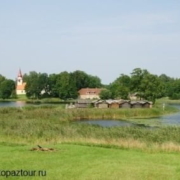


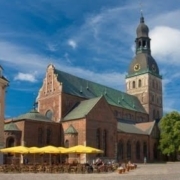

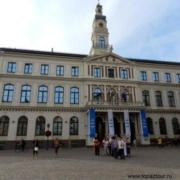
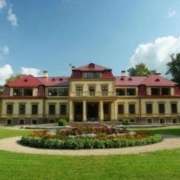
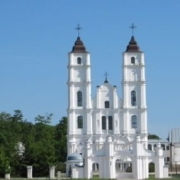


Leave a Reply
Want to join the discussion?Feel free to contribute!